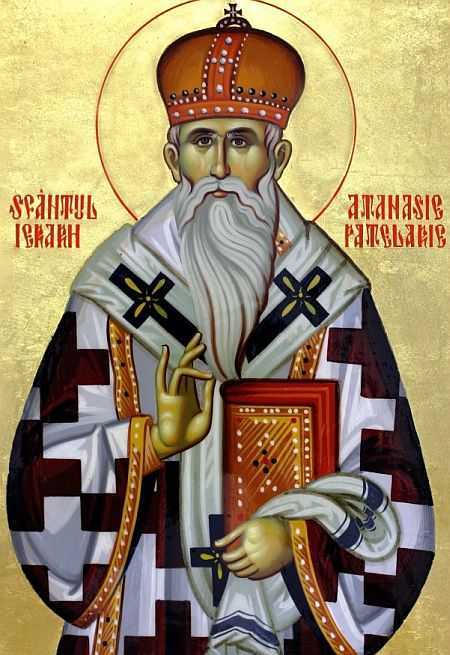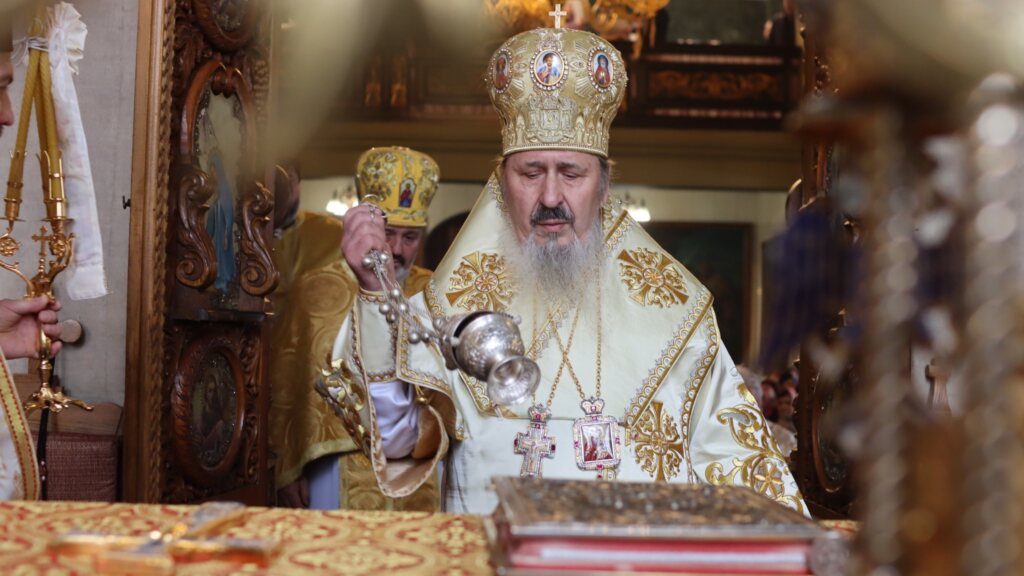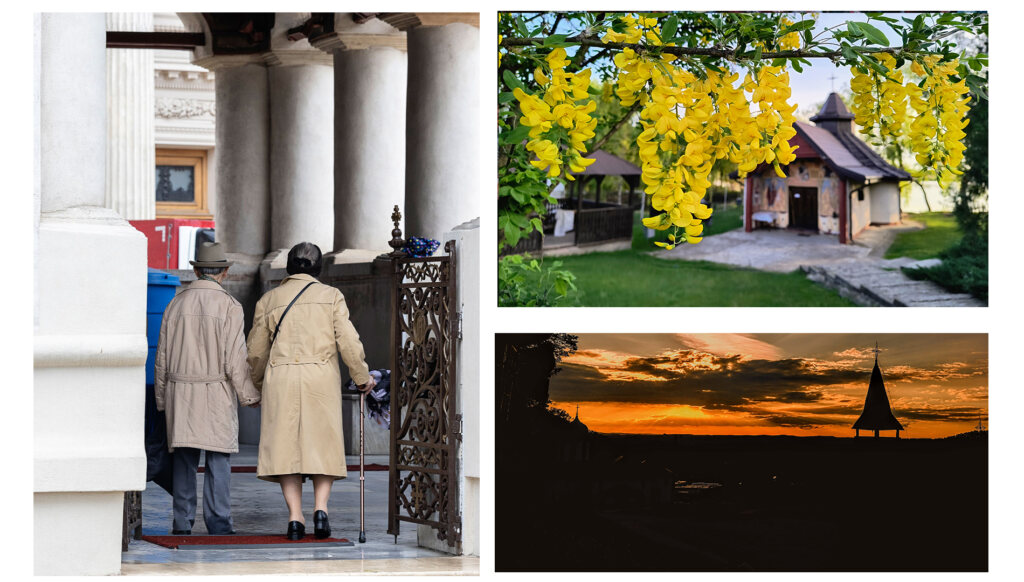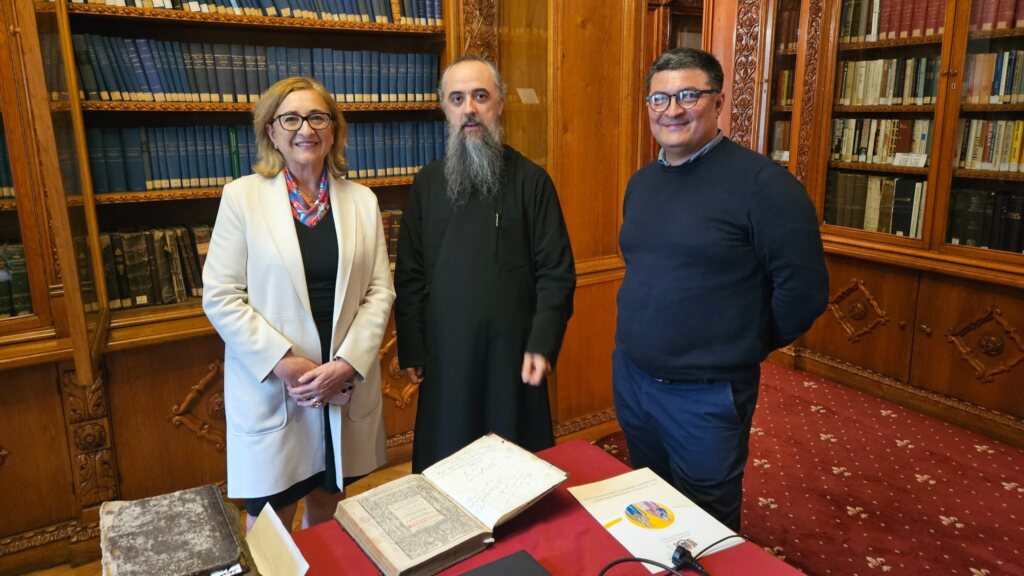The Great and Holy Thursday
Two events shape the liturgy of Great and Holy Thursday: the Last Supper of Christ with His disciples, and the betrayal of Judas. The meaning of both is in love. The Last Supper is the ultimate revelation of God’s redeeming love for man, of love as the very essence of salvation.
And the betrayal of Judas reveals that sin, death and self-destruction are also due to love, but to deviated and distorted love, love directed at that which does not deserve love. Here is the mystery of this unique day, and its liturgy, where light and darkness, joy and sorrow are so strangely mixed, challenges us with the choice on which depends the eternal destiny of each one of us.
“Now before the feast of the Passover, when Jesus knew that His hour was come… having loved His own which were in the world, He loved them unto the end…” (John 13:1).
To understand the meaning of the Last Supper we must see it as the very end of the great movement of Divine Love which began with the creation of the world and is now to be consummated in the death and resurrection of Christ.
God is Love (1 John 4:8). And the first gift of Love was life. The meaning, the content of life was communion. To be alive man was to eat and to drink, to partake of the world. The world was thus Divine love made food, made Body of man. And being alive, i.e. partaking of the world, man was to be in communion with God, to have God as the meaning, the content and the end of his life.
Communion with the God-given world was indeed communion with God. Man received his food from God and making it his body and his life, he offered the whole world to God, transformed it into life in God and with God.
The love of God gave life to man, the love of man for God transformed this life into communion with God. This was paradise. Life in it was, indeed, eucharistic.
Through man and his love for God the whole creation was to be sanctified and transformed into one all-embracing sacrament of Divine Presence and man was the priest of this sacrament.
But in sin man lost this eucharistic life. He lost it because he ceased to see the world as a means of Communion with God and his life as eucharist, as adoration and thanksgiving. . . He loves himself and the world for their own sake; he made himself the content and the end of his life.
He thought that his hunger and thirst, i.e. his dependence of his life on the world—can be satisfied by the world as such, by food as such.
But world and food, once they are deprived of their initial sacramental meaning—as means of communion with God, once they are not received for God’s sake and filled with hunger and thirst for God, once, in other words, God is no longer their real “content,” can give no life, satisfy no hunger, for they have no life in themselves…(…)
But if man betrayed, God remained faithful to man. He did not “turn Himself away forever from His creature whom He had made, neither did He forget the works of His hands, but He visited him in diverse manners, through the tender compassion of His mercy” (Liturgy of Saint Basil).
A new Divine work began, that of redemption and salvation. And it was fulfilled in Christ, the Son of God Who in order to restore man to his pristine beauty and to restore life as communion with God, became Man, took upon Himself our nature, with its thirst and hunger, with its desire for and love of, life.
And in Him life was revealed, given, accepted and fulfilled as total and perfect Eucharist, as total and perfect communion with God. He rejected the basic human temptation: to live “by bread alone”; He revealed that God and His kingdom are the real food, the real life of man.
And this perfect eucharistic Life, filled with God, and, therefore Divine and immortal, He gave to all those who would believe in Him, i,e. find in Him the meaning and the content of their lives. Such is the wonderful meaning of the Last Supper.
The Last Supper is the restoration of the paradise of bliss, of life as Eucharist and Communion.
But this hour of ultimate love is also that of the ultimate betrayal. Judas leaves the light of the Upper Room and goes into darkness.
“And it was night” (John 13:30).
Why does he leave? Because he loves, answers the Gospel, and his fateful love is stressed again and again in the hymns of Holy Thursday. It does not matter indeed, that he loves the “silver.” Money stands here for all the deviated and distorted love which leads man into betraying God. It is, indeed, love stolen from God and Judas, therefore, is the Thief.
by Very Rev. Alexander Schmemann, S.T.D.
Professor of Liturgical Theology, Saint Vladimir’s Seminary
Saint Athanasius the Great, Archbishop of Alexandria
He was a great Father of the Church and a pillar of Orthodoxy. He was born around the year 297 in the city of Alexandria into a family of pious Christians. He received a fine secular education, but he acquired more knowledge by diligent study of the Holy Scripture.
In his childhood, the future hierarch Athanasius became known to Saint Alexander the Patriarch of Alexandria (May 29). A group of children, which included Athanasius, were playing at the seashore. The Christian children decided to baptize their pagan playmates.
The young Athanasius, whom the children designated as “bishop”, performed the Baptism, precisely repeating the words he heard in church during this sacrament. Patriarch Alexander observed all this from a window. He then commanded that the children and their parents be brought to him.
He conversed with them for a long while, and determined that the Baptism performed by the children was done according to the Church order. He acknowledged the Baptism as real and sealed it with the sacrament of Chrismation. From this moment, the Patriarch looked after the spiritual upbringing of Athanasius and in time brought him into the clergy, at first as a reader, and then he ordained him as a deacon.
It was as a deacon that Saint Athanasius accompanied Patriarch Alexander to the First Ecumenical Council at Nicea in the year 325. At the Council, Saint Athanasius refuted of the heresy of Arius. His speech met with the approval of the Orthodox Fathers of the Council, but the Arians, those openly and those secretly so, came to hate Athanasius and persecuted him for the rest of his life.
After the death of holy Patriarch Alexander, Saint Athanasius was unanimously chosen as his successor in the See of Alexandria. He refused, accounting himself unworthy, but at the insistence of all the Orthodox populace that it was in agreement, he was consecrated bishop when he was twenty-eight, and installed as the archpastor of the Alexandrian Church.
Saint Athanasius guided the Church for forty-seven years, and during this time he endured persecution and grief from his antagonists. Several times he was expelled from Alexandria and hid himself from the Arians in desolate places, since they repeatedly tried to kill him. Saint Athanasius spent more than twenty years in exile, returned to his flock, and then was banished again.
There was a time when he remained as the only Orthodox bishop in the area, a moment when all the other bishops had fallen into heresy. At the false councils of Arian bishops he was deposed as bishop. Despite being persecuted for many years, the saint continued to defend the purity of the Orthodox Faith, and he wrote countless letters and tracts against the Arian heresy.
When Julian the Apostate (361-363) began a persecution against Christians, his wrath first fell upon Saint Athanasius, whom he considered a great pillar of Orthodoxy. Julian intended to kill the saint in order to strike Christianity a grievous blow, but he soon perished himself. Mortally wounded by an arrow during a battle, he cried out with despair: “You have conquered, O Galilean.” After Julian’s death, Saint Athanasius guided the Alexandrian Church for seven years and died in 373, at the age of seventy-six.
Numerous works of Saint Athanasius have been preserved; four Orations against the Arian heresy; also an Epistle to Epictetus, bishop of the Church of Corinth, on the divine and human natures in Jesus Christ; four Epistles to Serapion, Bishop of Thmuis, about the Holy Spirit and His Equality with the Father and the Son, directed against the heresy of Macedonius.
Other apologetic works in defense of Orthodoxy have been preserved, among which is the Letter to the emperor Constantius. Saint Athanasius wrote commentaries on Holy Scripture, and books of a moral and didactic character, as well as a biography of Saint Anthony the Great (January 17), with whom Saint Athanasius was very close. Saint John Chrysostom advised every Orthodox Christian to read this Life.
The memory of Saint Athanasius is celebrated also on January 18 with Saint Cyril of Alexandria.
Troparion — Tone 3
You were a pillar of Orthodoxy, Hierarch Athanasius, / supporting the Church with divine doctrines; / you proclaimed the Son to be of one Essence with the Father, / putting Arius to shame. / Righteous father, entreat Christ God to grant us His great mercy.
Saint Athanasius III Patelarios, Patriarch of Constantinople
He was born in 1560 on the island of Crete, into the pious Greek family Patelarios, with the name of Alexis. Despite his education and position in society, Alexis was attracted by the life of Christian ascetics. After his father’s death, he became a novice in one of the monasteries of Thessalonica with the name Ananias. From there, he he later went to the monastery of Esphimenou on Mt. Athos, where he fulfilled his obedience in the trapeza (dining area).
From Athos he journeyed to the Palestinian monasteries, and he was tonsured with the name Athanasius. Upon his return to Thessalonica he was ordained presbyter and spread the Gospel of Christ among the Vlachs and the Moldovians, for whom he translated the PSALTER from the Greek. Sometimes, the saint went to Mt. Athos for solitude, and to ask God’s blessing on his pastoral work. The holiness of his life attracted many Christians who wished to see a true preacher of the Orthodox Faith.
By his remarkable abilities and spiritual gifts he attracted the attention of the Patriarch of Constantinople, Cyril I (Lukaris) (1621-1623). Summoning the ascetic, Patriarch Cyril appointed him a preacher of the Patriarchal throne. Soon Saint Athanasius was consecrated bishop and became Metropolitan of Thessalonica.
At this time Patriarch Cyril was slandered before the sultan and imprisoned on the island of Tenedos. Saint Athanasius assumed the Patriarchal throne on March 25, 1634, on the day of the Annunciation of the Most Holy Theotokos.
Patriarch Athanasius led an incessant struggle against heretics, Jesuits, and Moslems. After only forty days on the Patriarchal throne, he was deposed through the intrigues of the enemies of Orthodoxy, and Cyril I was returned.
The saint went to Athos, where for a certain time he pursued asceticism in solitude. Then he became Patriarch again, but was deposed after a year. After this, he returned to Thessalonica and renewed his connections with the Holy Mountain. In view of the intolerable persecution of Christians by the Moslems, Saint Athanasius was repeatedly (from 1633 to 1643) obliged to send petitions to the Russian tsar Michael (1613-1645) seeking alms for the hapless Church of Constantinople.
When living at Thessalonica became impossible for the saint, he was forced to journey to Moldavia under the protection of its sovereign, Basil Lukulos, and he settled there in the monastery of Saint Nicholas near Galats, but he longed for Mount Athos. He visited it often and hoped to finish his life there, but God ordained something else for him.
In 1652 after the death of Patriarch Cyril I, Saint Athanasius was returned to the patriarchal throne. He remained only fifteen days, since he was not acceptable to the Moslems and Catholics. During his final Patriarchal service he preached a sermon in which he denounced papal pretensions to universal jurisdiction over the whole Church.
Persecuted by the Moslems and Jesuits, physically weakened, he transferred the administration of the Church of Constantinople to Metropolitan Paisius of Laureia, and he withdrew to Moldavia, where he was appointed administrator of the monastery of Saint Nicholas at Galats.
Saint Athanasius undertook a journey to Russia. In April 1653 he was met with great honor in Moscow by Patriarch Nikon (1652-1658) and Tsar Alexis Mikhailovich. Having received generous alms for the needs of the monastery, Patriarch Athanasius left for Galats in December 1653. On the way he fell ill and stayed at the Transfiguration Mgarsk monastery in the city of Lubno in February 1654.
Sensing his impending death, the saint wrote his last will, and he fell asleep in the Lord on April 5. Igumen Petronios and the brethren of the monastery buried the Patriarch. By Greek custom the saint was buried in a sitting position. On February 1, 1662 Saint Athanasius was glorified as a saint and his Feastday was designated as May 2, the Feast of Saint Athanasius the Great.
The relics of holy Patriarch Athansios, glorified by numerous miracles and signs, rest in the city of Kharkov, in the Annunciation cathedral church.
St Matrona of Moscow
Saint Matrona was born in 1881 in the village of Sebino in the Russian county of Tula. Her parents, Dimitrie and Natalia, very pious and honest peasants, lived a very modest life with their four children, Matrona being the youngest, acquired when her parents were no longer young. Before giving birth to her, her mother thought of taking her to an orphanage, but shortly afterwards she was shown in a dream a white bird with the face of a man and closed eyes sitting on her right hand. Taking this dream as a sign of rebuke, the God-fearing woman gave up leaving her child in the orphanage. Although she was born without sight, her mother loved her dearly.
From the very beginning, God wished to reveal His chosen vessel; at the time of her immersion in the water of Baptism, a cloud of incense with a good fragrance was seen rising from the font. Moreover, on the chest of the virgin, one could see an uplift in the sign of the cross. On Wednesdays and Fridays she did not nurse, but slept all day. Since she was blind from birth, children often teased her, which is why she shunned people from childhood, never leaving the house and devoting herself to prayer and contemplation of the divine.
Living near the village church, she went to all the services, sitting still and learning all the hymns. Even though she lacked the outward sight, her spiritual sight made her love icons so much that in her room the whole wall from top to bottom was full of icons in front of which candles burned incessantly and before which she prayed for long hours, taking in the whole world in her childlike heart.
When he was 6-7 years old, the spiritual gifts he had received from God were revealed, through which he could see clearly the thoughts and sins of people. Thanks to the care of the village landlord, Saint Matrona made pilgrimages to Kiev, Moscow and St Petersburg. There, entering the cathedral where St John of Kronstadt was serving, he ordered the people to step aside and make way for the young Matrona, then only 14, calling her ‘the eighth pillar of Russia’, words that showed her to be one of the few praying for the homeland that was to be gripped by Bolshevik atheist persecution.
By the time she was 17, Saint Matron could no longer walk. From that moment on she spent the rest of her life lying on her bed, devoting herself with greater devotion to prayer, fasting and the consolation of those who came to her. Soon hard and troubled times came upon Russia: revolution, land confiscation and famine. In 1925, when she was 40 years old, St. Matrona arrived in Moscow, taking turns living in various Christian homes, but without officially registering, as she was wanted for arrest.
Living for almost three decades in the Russian capital, she was a great prayerful woman, performing that spiritual ministry by which she turned many people to salvation. People came to her every day to receive deliverance from sorrows and troubles, as well as healing from illnesses. The Blessed Virgin comforted them, patted them on the head, marked them with the holy cross and spoke words of encouragement or prayed for them. The Blessed Virgin’s teachings showed the meaning of discretion and humility.
She would exhort the faithful, when they go to a priest or a confessor for advice, to pray that the Lord would give them wisdom, so that they would receive the right guidance and avoid going from one priest to another.
The very covetous he would admonish them not to distinguish themselves from other people by a peculiar outward appearance. He was very keen to behave patiently in trouble. He advised that, at Mass, the gaze should not look at anyone, and that the eyes should be closed or directed towards an icon in the church.
The saint received faithful people who sought her for advice and spiritual consolation until the end of her life, totally disinterested in any material advantage. In the last days of her suffering, she was confessed by her confessor and received the Holy Sacraments with humility. On May 2, 1952, she moved to the upper rooms, and on March 8, 1998, her unburied relics, spreading good fragrance, were discovered and placed in the monastery of the Mother of God in Moscow.
On 2 May 1999, Blessed Matrona was made a saint by the Church of Russia and her fame spread throughout the world because of the many miracles she worked for the faithful.
Tr by oca.org







